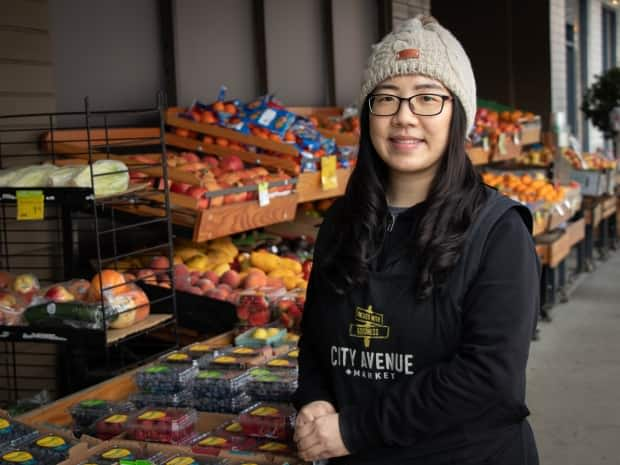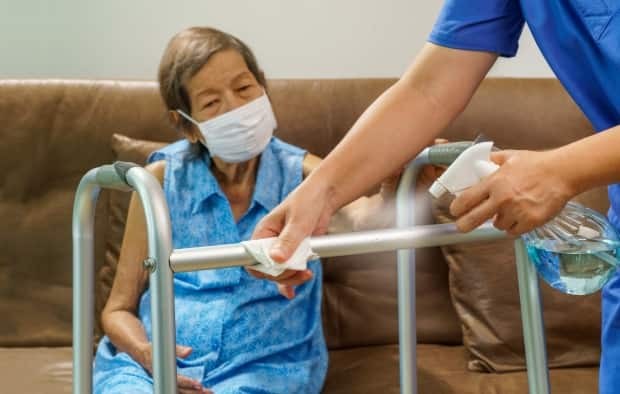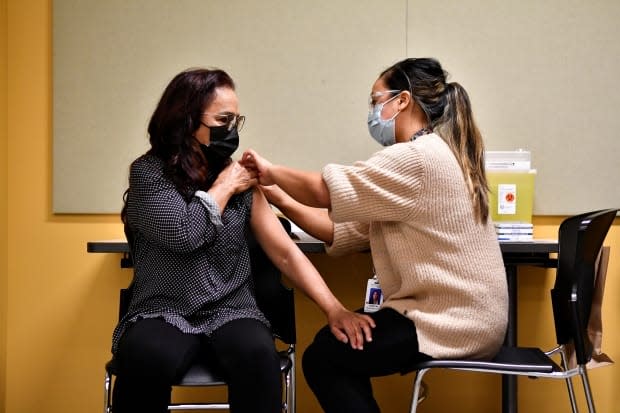Want to reduce COVID-19? Target high-risk populations, health experts urge
Two doctors who study COVID-19 say that when it comes to reducing the spread of the virus, Canadian health officials should focus more on tactics to help high-risk populations instead of imposing blanket restrictions on everyone.
Dr. Sharmistha Mishra, the Canada Research Chair in mathematical modelling and program science, will be sharing her findings at an upcoming talk on equity and epidemics at B.C.'s Centre for Gender and Sexual Health Equity.
"We talk about equity in a social science sort of framework, but it's actually fundamental to epidemic theory," Dr. Mishra said.
Mishra says all diseases spread more among some groups than others, so the job of epidemiologists like her is to find out which groups are the most affected and work from there.
The data that Mishra has been working with shows that people at the highest risk of contracting COVID-19 include essential and low-wage workers, people living in multi-generational or crowded homes, and those experiencing homelessness.

The virus can spill over to other demographics, Mishra adds, so reducing the numbers for those most at-risk will reduce transmission overall.
Mishra's talk will be a continuation of the talk her colleague Dr. Stefan Baral gave as part of the same series in December. Both doctors are based in Toronto.
Baral, an associate professor at the John Hopkins School of Public Health's Department of Epidemiology, says there are strategies that will specifically help at-risk populations.
These include providing more testing sites in neighbourhoods where those who are the most at risk are likely to live, as well as keeping those sites open longer so they can accommodate shift workers.

Baral also recommends offering more financial support for low-income workers so they will be more likely to take time off work if they have any COVID-19 symptoms or are awaiting test results.
"We need to alleviate the pressures that people face when making the decision about whether they're going to stay home from work," Baral said.
Another strategy he suggests is to provide self-isolation sites for those who live in crowded homes.
Systemic inequities vs. individual choices
Baral says it can be easy, and satisfying, to blame the spread of COVID-19 on people's individual choices rather than systemic inequities that put certain people at risk more than others.
Some physicians in Canada have advocated for COVID Zero, or COVID Near Zero — to lock down and restrict movement as much as possible in order to reduce transmission to more manageable levels.
But Baral and Mishra say they believe it would instead be more effective to address the needs of those at most risk of getting infected and passing it on to others.

Any type of lockdown will involve some form of essential workers, they argue.
"Restrictions have a tendency to increase disparities because they don't address people's underlying needs," Baral said.
"We still have Amazon, we still have Uber. We still have all of these folks that are serving the needs of society."
Community-based approach
Mishra and Baral say an important element in developing these strategies is to work with at-risk communities to figure out what works best for them.
Dr. Birinder Narang, a physician and member of the newly-formed South Asian COVID Task Force in Metro Vancouver, says a community-based and culturally-appropriate approach is what has helped to greatly reduce COVID-19 transmission in the Fraser Health region.
"There's been a lot of work happening behind the scenes with the community and with health care leaders," Narang said.
In November, the region was the epicentre of COVID-19 in British Columbia — in particular, the City of Surrey, which is home to many essential workers who live in multi-generational households.
But in the past few weeks the level of transmission there has dropped sharply.
Dr. Narang says the task force came together to address the increase in cases in their community.
Members have created culturally relevant information in multiple languages and gathered information about what barriers people in the region are facing.
"We knew that the majority of people were trying the hardest, but that there were systemic and societal factors that were making it more difficult," he said.
"One of the challenges of the public health orders is as they change, we don't know how accessible they are to every community."

